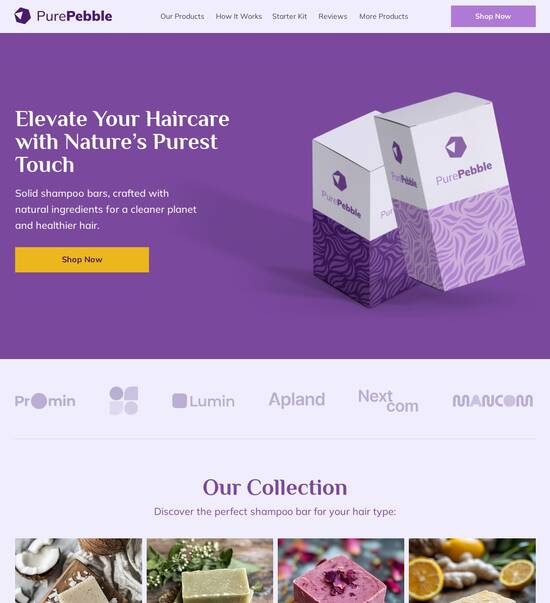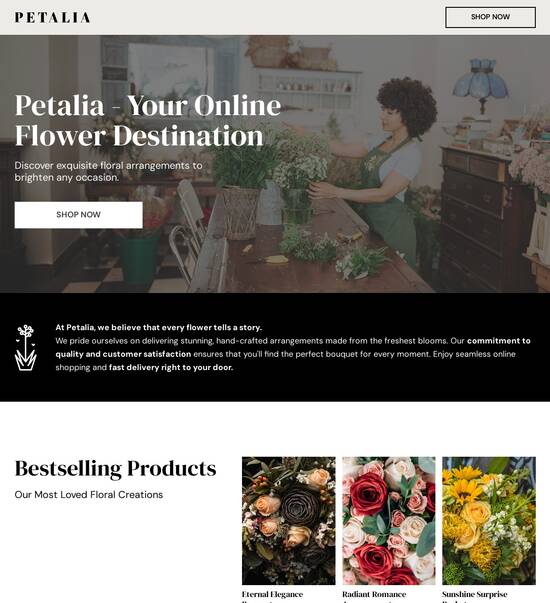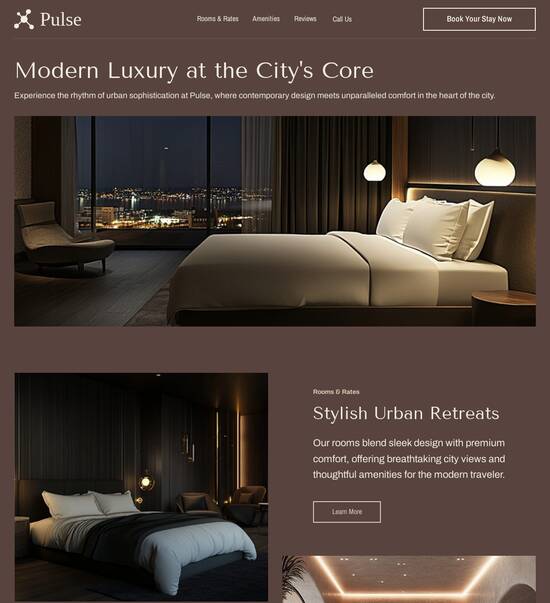
Material design conference page template
Explore Similar TemplatesAbout template
Unleash your creativity with the material design conference page template. Try Instapage today.
Recommended templates

Easy to build without coding
With the intuitive drag-and-drop builder, anyone on your team can create high-converting pages without any knowledge of code or design. Make enhancements to your landing page with custom widgets using Javascript, HTML/CSS, or third-party scripts.

Multiple layouts for any industry and goal
Select from 500+ landing page layouts built to boost conversions across industry-specific scenarios. Customize them by adjusting fonts, adding images, and generating on-brand content with the AI assistant. Quickly scale with Instablocks® and Global Blocks that you can save, reuse, and update globally.

Loads fast and looks polished on any device
Every template is responsive, which means they present professionally on any device and load blazingly fast with our Thor Render Engine. You can also power them up with Google AMP technology to deliver an unparalleled mobile experience and drive higher conversions.

Robust analytics & experimentation
Get real-time updates and reporting across all your devices, showing the number of visitors, conversions, cost-per-visitor, and cost-per-lead. Launch AI-powered experiments, run A/B tests, and use heatmaps to analyze user behavior, then optimize your landing page to maximize conversions.







Easy to build without coding
With the intuitive drag-and-drop builder, anyone on your team can create high-converting pages without any knowledge of code or design. Make enhancements to your landing page with custom widgets using Javascript, HTML/CSS, or third-party scripts.
Multiple layouts for any industry and goal
Select from 500+ landing page layouts built to boost conversions across industry-specific scenarios. Customize them by adjusting fonts, adding images, and generating on-brand content with the AI assistant. Quickly scale with Instablocks® and Global Blocks that you can save, reuse, and update globally.
Loads fast and looks polished on any device
Every template is responsive, which means they present professionally on any device and load blazingly fast with our Thor Render Engine.
Robust analytics & experimentation
Get real-time updates and reporting across all your devices, showing the number of visitors, conversions, cost-per-visitor, and cost-per-lead. Launch AI-powered experiments, run A/B tests, and use heatmaps to analyze user behavior, then optimize your landing page to maximize conversions.
All the features you need to build lead-generating landing pages
Explore more featuresLearn how to build top-performing landing pages for any goal
FAQs
Leading the way in building high-performing landing pages





An In-Depth Guide to Mastering Instapage for Landing Page Optimization
Instapage is revolutionizing the way marketers build landing pages, offering unparalleled tools for boosting conversions and enhancing customer engagement. This guide provides a step-by-step approach for using Instapage to maximize your digital marketing campaigns, particularly in the competitive landscapes of business services, education, and tech industries across the USA.
Understanding Instapage's Value Proposition
Instapage is an all-in-one landing page and conversion rate optimization platform designed to cater to marketers of all team sizes and budgets. With its extensive library of templates and lead generation tools, Instapage empowers you to rapidly deploy high-converting pages tailored to your unique audience.
- 100+ High-Converting Templates: Instapage provides ready-made templates that save you time while ensuring your pages are aesthetically pleasing and optimized for conversions.
- Intuitive Page Builders: Easily create custom landing pages without any coding skills, allowing marketers to focus on strategy rather than technicalities.
- Built-In Optimization Features: Benefit from A/B tests and heatmap insights to refine your landing page's effectiveness continually.
Step 1: Setting Up Your First Landing Page
Getting started with Instapage is straightforward. Here’s how to create your first landing page:
- Choose a Template: Select a high-converting template that matches your campaign goals. Ensure the design aligns with your brand for a cohesive look.
- Customize Your Content: Use the drag-and-drop interface to modify text, images, and other elements. Make sure to tailor the content to your specific audience.
- Add Lead Generation Elements: Integrate forms and buttons to capture leads effectively. Ensure these elements are strategically placed to maximize visibility.
Step 2: Optimizing for Conversions
Once your landing page is set up, it's crucial to optimize it for the best performance. Focus on:
- A/B Testing: Regularly test different headlines, images, and calls-to-action to identify what resonates best with your audience.
- Analytics Dashboard: Utilize Instapage's analytics tools to track visitor behavior and conversion metrics, enabling data-driven decisions.
- Personalization Features: Take advantage of dynamic text replacement to create tailored experiences for different segments of your audience.
Step 3: Launching and Reviewing Your Page
After configuration and optimization, you’re ready to launch. Keep monitoring your landing page post-launch to ensure it meets performance expectations.
Regular reviews and updates are essential for maintaining high conversion rates and adapting to user behavior. Use feedback loops to gather insights from both analytics and user interactions.
With Instapage, the process of creating, optimizing, and scaling your landing pages becomes seamless, ensuring you can maximize ROI on your digital marketing campaigns.
People also ask about Material design conference page template
Material design conference page template: A comprehensive guide
Understanding material design conference page templates
Material design, created by Google, is a design language that emphasizes the importance of delivering visual elements in a manner that users find intuitive and engaging. Developed to create a cohesive experience across platforms, its principles can significantly impact web development, particularly for conference page templates. This guide explores these templates and explains how they combine aesthetic design with functional usability.
Defining material design in the context of web development
At its core, material design focuses on physical metaphors, bold colors, and responsive animations. These principles help in creating an engaging environment that users can navigate with ease. For instance, the approach highlights depth through overlapping elements and shadows, while vibrant color palettes encourage user interaction. In web development, adhering to these principles ensures a fluid and seamless user experience, ultimately retaining a visitor's attention longer.
Key characteristics of material design involve its emphasis on layering and motion. Features such as intuitive touch reactions and animated transitions enhance fluidity, ensuring that users feel in control. By integrating these design philosophies, developers can create conference pages that are not only visually appealing but also provide an enhanced user experience.
The essentials of a conference page template
Creating a conference page template is indispensable for event organizers. It serves as a centralized platform that conveys crucial information to potential attendees, sponsors, and speakers. Effective templates incorporate several key features that streamline the user experience and boost engagement. Clear navigation, event details, speaker profiles, and session highlights should be prioritized to ensure users can easily find the information they seek.
Clear navigation structure: Easy-to-use navigation ensures users can find essential information quickly without navigating multiple pages.
Event details: Include event time, date, and location prominently to ensure all attendees are informed.
Speaker profiles and session highlights: Showcase speakers with brief bios and session overviews to generate interest.
By utilizing pre-designed templates, developers can streamline the creation process, focusing instead on customizing each element to capture the unique essence of the conference.
Bootstrap: The backbone of responsive design
Bootstrap, as a well-known front-end framework, is essential for developers creating responsive websites, especially conference pages. Its grid system allows designers to structure layouts efficiently across various screen sizes. Bootstrap not only provides a uniform look but also guarantees that users have a consistent experience regardless of the device they use.
The advantages of using Bootstrap for conference page templates are manifold. The built-in components reduce development time significantly, as pre-designed elements like buttons, forms, and navigation menus can be implemented seamlessly. Additionally, utilizing Bootstrap significantly enhances usability; its responsive nature allows content to adapt fluidly to any display, making it easier for users to interact with your conference content.
Crafting a fluid and responsive experience
Fluid design is critical in providing users with a pleasant experience—especially in a world where conferences attract attendees with varying devices. Ensuring conference pages are visually appealing and functional on all screen sizes is paramount. Best practices for optimizing usability include designing with a mobile-first approach, ensuring the layout is adaptable, and using responsive media.
Best practices for desktop screens: Prioritize navigational elements and create visual hierarchies that guide users.
Mobile-first design strategies: Simplify content for mobile visitors, pushing essential details to the forefront.
Optimizing viewing experiences: Utilize responsive images and appropriate typography to enhance legibility across devices.
By implementing these strategies, developers can create conference page templates that not only look good but also function well across devices.
Exploring template layouts: Options and considerations
Choosing the right layout for a conference page template is essential as it impacts user navigation and engagement. Common layouts include single-page and multi-page formats. A single-page layout presents all the content on one page, making it easier for users to scroll through information quickly. In contrast, a multi-page layout categorizes content into sections, which can be beneficial for larger events with diverse session tracks.
Single-page vs multi-page layouts: Choose based on the complexity of the event and the depth of content.
Grid vs list view: Consider how users will interact with the content when choosing how to present sessions and speakers.
The role of visuals: Incorporating multimedia elements enhances layouts, capturing attention and encouraging exploration.
Selecting an appropriate layout improves usability significantly by aligning with the target audience’s preferences and interactions.
Elevating user experience through innovative components
Innovative components play a crucial role in enhancing the overall user experience of conference page templates. Elements such as header sections with striking hero images grab attention instantly, while interactive components like schedules and itineraries provide engaging content for users. To maximize impact, these components should facilitate ease of use and encourage users to explore further.
Header sections: Use visually striking images that represent the event's theme to attract user engagement.
Registration forms: Streamlined forms ensure users can sign up or inquire easily.
Interactive schedules: Dynamic displays allow users to view session times and details with minimal effort.
By effectively combining usability and aesthetics, developers can create templates that feel intuitive while looking professional.
Customization for unique branding
Branding plays a significant role in defining the identity of a conference. A well-designed, customized conference page template communicates the essence of your event. Techniques for customizing material design templates include integrating specific color schemes that reflect the brand and utilizing typography that embodies the desired characteristics of the event.
Color schemes: Customizing the palette can enhance brand recognition and aesthetic appeal.
Typography choices: Selecting fonts that align with your conference’s identity helps communicate tone.
Incorporating logos: Ensure your brand is visible by prominently displaying relevant logos and messages.
Case studies of successful conference websites showcasing custom material design templates exemplify how branding and user engagement can go hand in hand.
Leveraging HTML for enhanced functionality
HTML plays an integral role in developing effective conference page templates and ensuring their visibility on search engines. Utilizing semantic markup can improve SEO, leading to better rankings and discovery. Additionally, forms are crucial components for capturing attendee information and enhancing engagement.
Semantic markup: Implementing this improves accessibility and search engine understanding.
Forms for attendee information: Gather important details to facilitate communication and engagement.
Structured data: Utilizing this can lead to enhanced visibility in search results.
For developers, writing clean HTML is essential for ensuring a template is not only functional but also sustainable for future updates.
User-centric design: Catering to your audience’s needs
Understanding your audience is vital when designing a conference page template. Recognizing various user personas ensures the design is inclusive, catering to diverse interests and needs. Incorporating elements that directly address attendee expectations creates a more engaging platform overall.
Recognizing user personas: Develop personas to guide design choices and anticipate user behavior.
Creating inclusive designs: Ensure accessibility for individuals with varying capabilities.
Analyzing feedback: Utilize user feedback to iterate and refine design, improving usability over time.
User-centric designs can significantly elevate the experience and ensure that attendees feel valued and engaged.
Performance optimization: Ensuring speed and usability
Performance optimization is a critical aspect of web design, particularly for conference pages where speed directly impacts user engagement. Several factors can affect how quickly a page loads. Minimizing image sizes, utilizing lazy loading techniques, and optimizing scripts can all contribute to improved performance without compromising design.
Image compression: Reducing image sizes without impacting quality will enhance loading speeds.
Lazy loading: Ensures that images are loaded only when they enter the viewport, optimizing performance.
Script optimization: Streamlining scripts can also result in quicker load times and better responsiveness.
Focusing on these aspects will ensure that potential attendees remain engaged, reducing bounce rates while increasing overall satisfaction.
Real-world applications of material design conference templates
Many events now utilize material design templates, demonstrating their effectiveness in enhancing user engagement and improving registration metrics. For instance, successful conference websites showcase user-friendly interfaces that help attendees effortlessly access crucial information, significantly boosting participation rates.
Case studies: Examine events that implemented material design templates successfully, showcasing user engagement metrics.
Analysis of registration metrics: Successful events note improved registration through effortless navigation and clear information.
Comparisons with traditional designs: Highlight how material design pages outperform more conventional site designs.
These examples underline the importance of effective design in ensuring the success of conferences across various industries.
The future of conference page design
As technology advances, we can anticipate new trends to shape the landscape of conference design. The increasing demand for personalization and accessibility will likely drive future developments in material design templates. Predicting how these templates will evolve means considering not only aesthetics but also integrating emerging features that enhance user experience and performance.
Emerging trends: Keep an eye on novel features such as VR and AR integration for more immersive experiences.
User experience evolution: Anticipate more advancements in personalization to align with user expectations.
Importance of performance: Ongoing optimization will remain essential for delivering satisfying user experiences.
Ultimately, the future of conference page design will center around how well templates meet the evolving needs of users, ensuring the highest degree of engagement possible.
Ready to skyrocket conversions?
Supercharge your ad campaigns with high-performing landing pages
Get started














